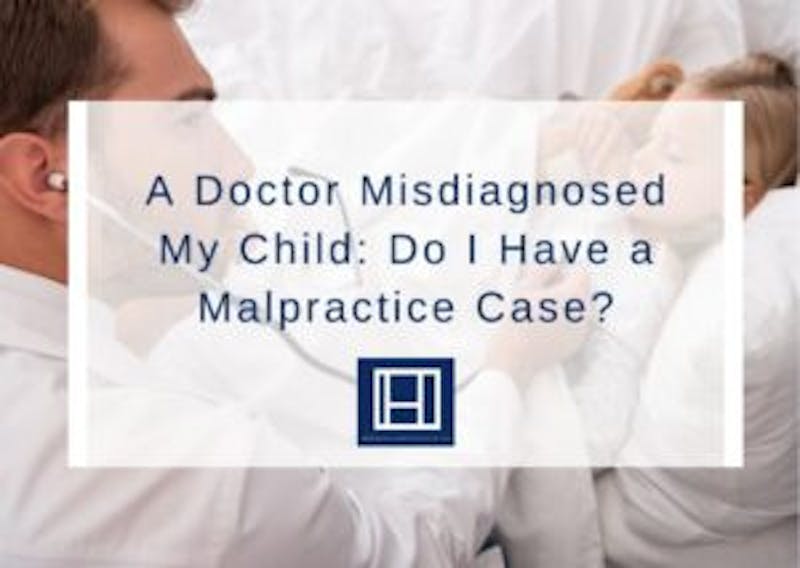
When medical professionals fail to diagnose a child’s medical condition or fail to diagnose it in time, the child’s condition can worsen. As with every area of the law, it can be difficult to tell whether you have a medical malpractice case. This is especially true for pediatric malpractice cases. Suppose your child is showing signs of having a physical, mental, or emotional condition, and you believe it might be related to negligent medical care. In that case, there is a chance that you have a valid medical malpractice case.
Types of Malpractice Due to Misdiagnosis
Many medical malpractice lawsuits involve misdiagnosis or delayed diagnosis of an illness, injury, or medical condition. When doctors misdiagnose patients, it can lead to delayed treatment, incorrect treatment, or no treatment. The child’s condition can become much more severe, and they may even die because they were misdiagnosed.
Proving Medical Malpractice Due to Diagnostic Errors
Proving that the doctor misdiagnosed your child is not necessarily evidence of negligence. Even the best doctors who provide high-quality care can make diagnostic errors. The key to proving that malpractice has happened is to prove that the doctor acted incompetently and failed to use reasonable care when making a diagnosis. Patients must prove the following three elements to succeed in a medical malpractice lawsuit due to misdiagnosis:
- A doctor-patient relationship existed
- The doctor failed to provide treatment in a reasonably skillful and competent manner
- The doctor’s negligence caused the patient an actual injury
The second and third elements are typically the most contested in a medical malpractice case. An attorney can help you gather evidence showing that the doctor was negligent. Most cases involve an error in diagnostic testing due to faulty equipment or human error.
The Differential Diagnosis Process
You will need to use the testimony of expert witnesses to shed light on whether the doctor erred when using the differential diagnosis method the doctor used to diagnose your child. The differential diagnosis process involves a doctor conducting a preliminary evaluation of the patient, asking detailed questions about the patient’s medical history and symptoms, and medical history.
The doctor will rule out a number of potential diagnoses during the investigation process with only one diagnosis remaining at the end. Patients need to show that a doctor in a similar specialty under similar circumstances would not have misdiagnosed the child’s illness or medical condition. Doing so requires proving one of two things:
- The doctor did not include the correct medical diagnosis on the differential diagnosis list, and a reasonably competent and skillful doctor under similar circumstances would have
- The doctor included the patient’s correct medical diagnosis on the differential diagnosis list but did not perform the correct tests or seek options from specialists to be able to thoroughly investigate the viability of the medical diagnosis
Schedule a Free Legal Consultation Contact Us
The Statute of Limitations in Alabama
Every state imposes time limits, called statutes of limitations, on bringing a medical malpractice case. Statutes of limitations can impact your case and right to recovery significantly. The statute of limitations for medical malpractice cases is typically two years in Alabama. However, for medical malpractice cases involving minors, the statute of limitations is longer, typically four years. If your child was under age four when the malpractice occurred, they will have until age 8 to file a lawsuit.
The discovery rule may also apply in your child’s case. If you did not know that your child had become a victim of medical malpractice, you may have more time. Victims who do not discover or could not have reasonably discovered the medical malpractice within the two-year timeframe have an additional six months from the discovery of the malpractice, or the discovery of facts that should have led to the discovery of malpractice, whichever is earlier, to file a claim. If you do not file your lawsuit before the time limit runs out, you will not be able to recover compensation for your child’s injuries.
Contact an Alabama Medical Malpractice Attorney
Has a doctor misdiagnosed your child, causing him or her additional medical issues and complications? If so, one of the best things you can do is reach out to an experienced medical malpractice attorney. As mentioned above, you only have a short time frame to bring a claim. Working with an attorney can help you protect your child’s legal rights. Contact the Alabama personal injury attorneys at Heninger Garrison Davis today to schedule your free case evaluation to learn more about your rights.
